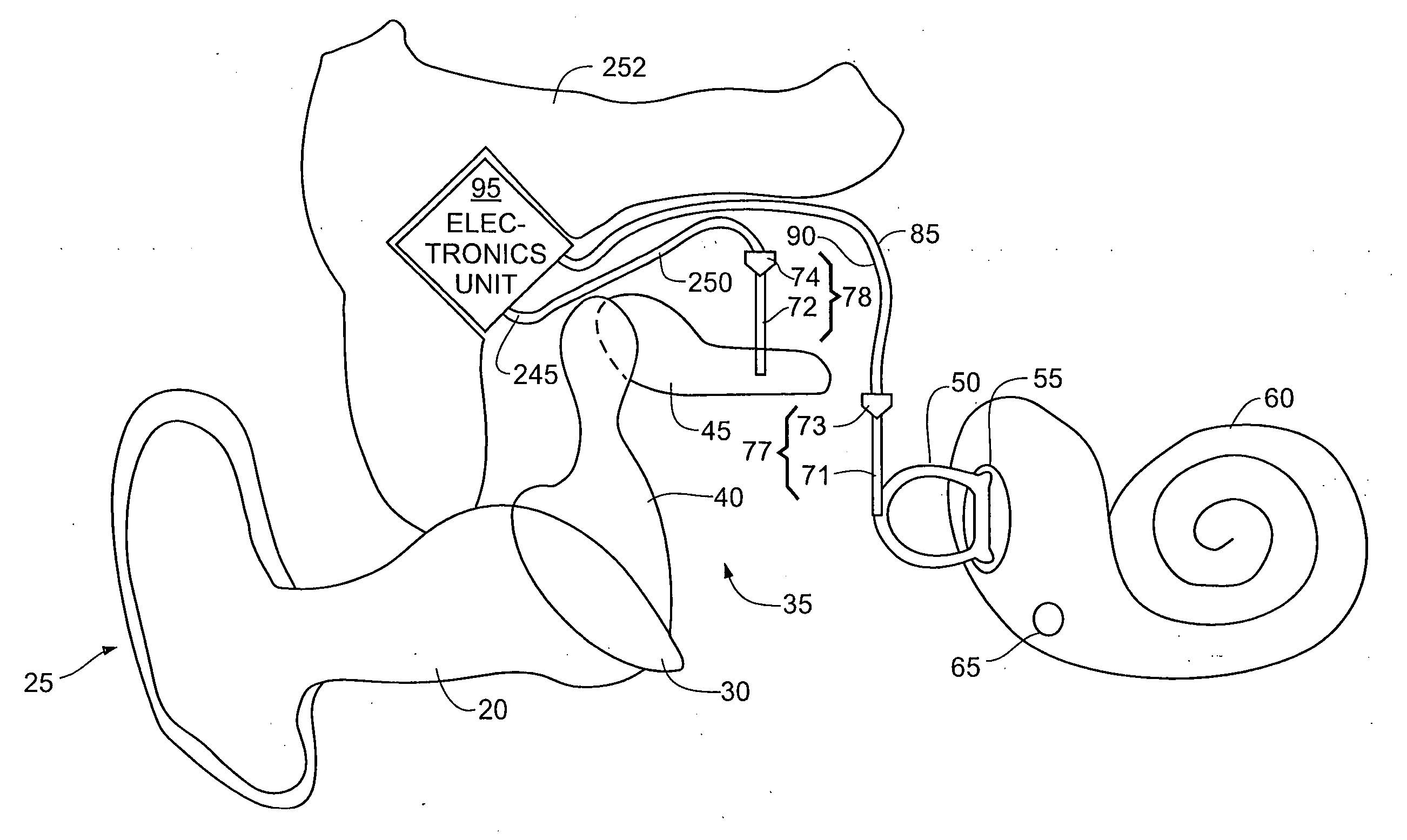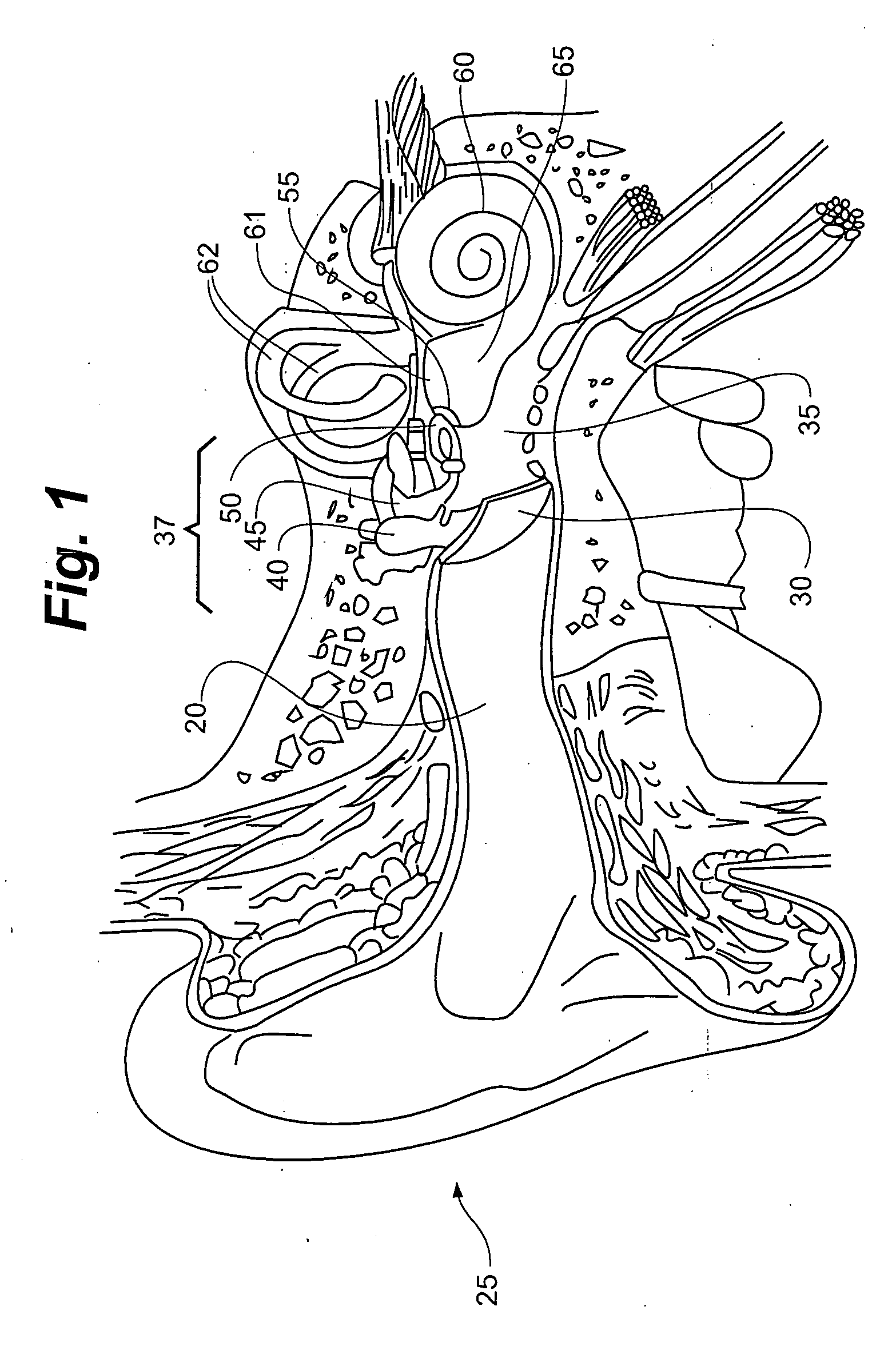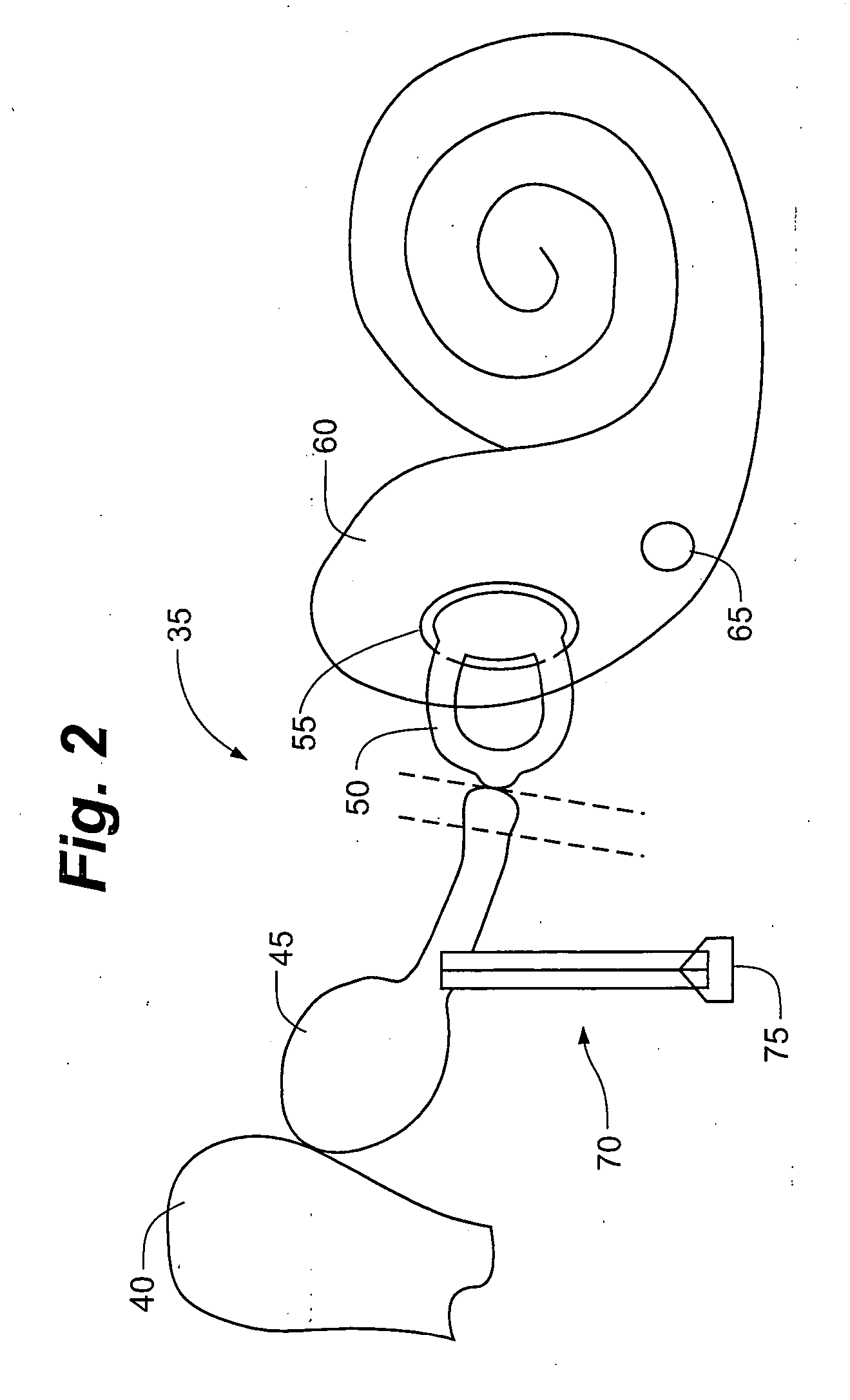Method and apparatus for minimally invasive placement of sensing and driver assemblies to improve hearing loss
a technology for sensing and driving components, applied in the direction of electrical equipment, deaf-aid sets, etc., can solve the problems of relative invasive procedure and extend the time required, and achieve the effect of facilitating the placement of mounting assemblies
- Summary
- Abstract
- Description
- Claims
- Application Information
AI Technical Summary
Benefits of technology
Problems solved by technology
Method used
Image
Examples
Embodiment Construction
[0018] The following detailed description should be read with reference to the drawings, in which like elements in different drawings are numbered identically. The drawings depict selected embodiments and are not intended to limit the scope of the invention. It will be understood that embodiments shown in the drawings and described below are merely for illustrative purposes, and are not intended to limit the scope of the invention as defined in the claims.
[0019] Embodiments of the invention provide a method and apparatus for placing sensing / driver assemblies (such as those used in partial middle ear implantable (P-MEI), total middle ear implantable (T-MEI), or other hearing aid systems) into a middle ear space using a minimally invasive procedure and / or a novel mounting structure. A P-MEI or T-MEI hearing aid system may be installed to assist the human auditory system in converting acoustic energy contained within sound waves into electrochemical signals delivered to the brain and ...
PUM
 Login to View More
Login to View More Abstract
Description
Claims
Application Information
 Login to View More
Login to View More - R&D
- Intellectual Property
- Life Sciences
- Materials
- Tech Scout
- Unparalleled Data Quality
- Higher Quality Content
- 60% Fewer Hallucinations
Browse by: Latest US Patents, China's latest patents, Technical Efficacy Thesaurus, Application Domain, Technology Topic, Popular Technical Reports.
© 2025 PatSnap. All rights reserved.Legal|Privacy policy|Modern Slavery Act Transparency Statement|Sitemap|About US| Contact US: help@patsnap.com



